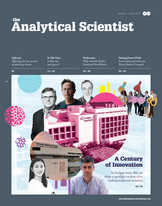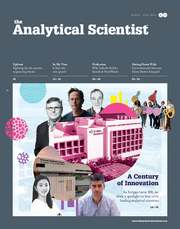The S-Word and US Research
What short- and long-term impact will sequestration have on the US scientific community? And is there a silver lining in the opportunity to re-assess research priorities?
Sequestration, the automatic, across-the-board spending cuts to reduce the US federal budget by $85 billion, has gone into effect. At the time of writing, the FY 2013 budget-setting process is in flux, with a bitter negotiation process getting under way. As if the issue wasn’t complicated enough, both the House and Senate are required to pass a budget resolution for FY 2014 by April 15.

Bill Kelly
Amidst this turmoil, scientists who rely on federal support for their research are, understandably, concerned. To give an example of the impact, the National Institutes of Health (NIH) budget will be cut by $1.6 billion over the next seven months and NIH has already notified contractors and grant recipients that their funds may be affected. The National Science Foundation (NSF) and other agencies supporting research will face budget reductions of comparable magnitude.
A few days before the sequestration took effect, my company, BioInformatics LLC, a market research and advisory firm in the life science industry, surveyed more than 300 US academic, government and pharmaceutical scientists to gauge the impact of the planned cutbacks in federal funding for research. Our goal was to collect information for companies that manufacture the “tools of science” about how the budget cutbacks would affect the sales of instruments and consumables sold to US research labs.
The survey indicated that lab suppliers can expect lower sales as a near-term reaction to the budget sequestration – especially from the government and academic sectors. However, only one-quarter of academic and government life scientists said that they will consider deferring or postponing capital equipment and/or instrument purchases this year. This is obviously good news for commercial suppliers. But the survey also revealed scientists’ deep concern over the longer-term implications of the sequester.
The survey data suggest that most researchers are committed to keeping current research programs moving forward with funds already in hand, while reducing long-term spending through hiring freezes, lab closures, project cancellations and reductions in new labs. The cost reductions that survey respondents are most likely to take are precisely those that will have a long-lasting effect on the life science market. Scientific research isn’t something that can be turned on and off – it is a long-term investment. Budget uncertainty begins to erode the supporting infrastructure, drives researchers out of the field and threatens the US leadership position in the biosciences.
Scientific societies, advocacy groups and scientists themselves have been extremely vocal in denouncing the sequestration and equally adamant that funding should not only be restored but increased. Many also agree that the heavy handed nature of the cuts hurts valuable research as hard as programs perhaps less worthy and deserving of reductions or elimination. One survey respondent commented that sequestration “makes about as much sense as performing brain surgery with a sledge hammer”.
Sitting under this dark cloud, is there something to feel positive about? Well, Congress and the Administration will soon begin their debate over the FY 2014 budget and with this comes the hope of a more rational mechanism for attaining deficit reduction while preserving investments in critical research.
As US public sector budgets shrink, the scientific community must articulate its priorities and more effectively communicate the value of the research that supports these priorities. Scientists should not be expected to justify their research in terms of the societal and economic benefits they will deliver in return for public support, but it is not unreasonable to suggest that they play a role in developing methods to assess and report the impact of their research.
Lastly, many respondents to the survey were critical of the current system by which NIH grants are awarded, particularly in that it tends to fund those who are already funded and creates a generational divide between scientific “haves” and “have nots”. The financial pressure of the sequestration and future spending reductions could provide the impetus for a system that rewards innovation and “out of the box” thinking and trains the next generation of scientists.
Following a stint in Military Intelligence, Bill Kelly stumbled into biotechnology by recognizing a need for a deeper understanding of why scientists choose to purchase particular products for their labs. He co-founded BioInformatics LLC in 1994 to help lab suppliers better understand the needs of their scientific customers. Since 1997, the company has maintained a global expert network of scientists to facilitate communication between scientists and the suppliers who support their research.“The success of a scientist’s research is partly dependent on having the right tools – we give them a voice in product design decisions that can ultimately lead to breakthrough discoveries.”















